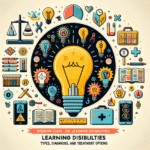
Dissociative Disorders Uncovered: The Ultimate Link Between Trauma and Identity
Introduction
Imagine waking up one day feeling like a stranger in your own life—your memories, your emotions, and even your sense of self seem fractured. This unsettling experience is deeply rooted in dissociative disorders, conditions that often emerge from the shadows of trauma. In exploring this topic, "Dissociative Disorders Uncovered: The Link Between Trauma and Identity," we delve into how experiences of trauma can lead to profound alterations in identity. Through real-world case studies, empathetic storytelling, and insights from clinical research, we illuminate the complex relationship between trauma and dissociative disorders.
What Are Dissociative Disorders?
Dissociative disorders encompass a range of psychological conditions that involve disruptions in consciousness, memory, identity, or perception. These disorders are often ways for individuals to cope with overwhelming stress or trauma. The primary types of dissociative disorders include:
Dissociative Identity Disorder (DID): Formerly known as multiple personality disorder, DID involves the presence of two or more distinct personality states.
Dissociative Amnesia: Characterized by an inability to recall important autobiographical information, typically associated with traumatic or stressful events.
- Depersonalization/Derealization Disorder: Involves persistent or recurrent feelings of detachment from one’s mind or body (depersonalization) or feeling disconnected from the environment (derealization).
The Role of Trauma
Trauma often serves as the catalyst for dissociative disorders. The DSM-5 identifies trauma as a precipitating factor, particularly in the case of DID. Many individuals with dissociative disorders report experiencing significant adverse childhood experiences (ACEs), such as emotional abuse, physical abuse, or neglect. These traumas can significantly impact the development of identity and self-concept.
Case Study: Emma’s Journey with DID
Background: Emma, a 28-year-old woman, sought therapy after experiencing debilitating anxiety and confusion about her identity. During sessions, she revealed memories of chronic emotional neglect during childhood.
Analysis: Emma’s case exemplifies the power of trauma in shaping dissociative disorders. Through therapy, she worked to integrate her dissociated identities, shedding light on how early experiences can fragment one’s self-concept. The relational and emotional work was essential in Emma’s journey toward healing.
Unpacking Identity Formation
Identity is a multifaceted construct that encompasses self-perception, relationships, and emotional well-being. Dissociative disorders disrupt this delicate balance, creating profound challenges in the quest for a cohesive identity.
The Mechanisms of Dissociation
Dissociation acts as a defense mechanism, enabling individuals to distance themselves from intolerable experiences. This can manifest in various ways, including:
- Memory Fragmentation: Memories of traumatic events can become dissociated, leading individuals to lose significant aspects of their history.
- Identity Splitting: When faced with trauma, individuals may develop alternate identities or dissociate certain characteristics and memories.
Table 1: Types of Dissociative Mechanisms and Their Impact
| Mechanism | Description | Potential Impact on Identity |
|---|---|---|
| Memory Fragmentation | Loss of memories related to trauma | Inability to connect past experiences to self |
| Identity Splitting | Development of distinct alternate identities | Confusion and disintegration of self-image |
| Emotional Detachment | Lack of emotional response or numbness | Difficulty in emotional regulation |
The Therapeutic Pathway: Healing from Trauma
Understanding the link between trauma and dissociative disorders opens pathways for effective treatment. Approaches aimed at healing trauma have shown promise in helping individuals form a more cohesive identity.
Therapeutic Techniques
Trauma-Focused Therapy: This focuses specifically on processing traumatic memories, helping clients to re-integrate their fragmented sense of self.
Dialectical Behavior Therapy (DBT): DBT can help individuals manage intense emotions, often a result of past trauma, and develop healthier coping mechanisms.
- Eye Movement Desensitization and Reprocessing (EMDR): EMDR is particularly effective for trauma victims as it facilitates the processing of distressing memories.
Case Study: Marcus’s Experience with Trauma-Focused Therapy
Background: Marcus, a 35-year-old man, had lived with dissociative amnesia following a traumatic incident involving violence. Through trauma-focused therapy, he began to confront and process his memories.
Analysis: By directly addressing his trauma, Marcus was able to gradually recover lost memories and reconnect with his identity. His experience underscores the importance of targeted therapeutic techniques in addressing the intersection of trauma and dissociative disorders.
The Societal Impact of Dissociative Disorders
Dissociative disorders often carry societal stigma, yet understanding their roots in trauma is essential for fostering empathy and support.
Challenging Stigmas
Many misconceptions surround dissociative disorders, from viewing individuals as “crazy” to misunderstanding the reality of their experiences. Education is essential to dismantle these stereotypes. By shedding light on the link between trauma and identity, we forge a pathway toward compassion.
Table 2: Myths vs. Facts About Dissociative Disorders
| Myth | Fact |
|---|---|
| Individuals with DID are simply “faking” | DID is a legitimate disorder rooted in trauma |
| Dissociative disorders are rare | They are more common than widely perceived |
| Those with dissociative disorders cannot form relationships | Many lead fulfilling lives, but need understanding and support |
Conclusion
In unraveling "Dissociative Disorders Uncovered: The Link Between Trauma and Identity," we have embarked on a journey that reveals the profound interplay between trauma and the formation of identity. As we have seen through case studies and therapeutic insights, healing is possible. It requires understanding, compassion, and a recognition of the scars left by trauma and how they can shape identity.
Motivational Takeaway
For those struggling with dissociative disorders or supporting someone who is, remember: healing is a journey. With the right therapeutic support and a compassionate community, individuals can reclaim their identities and foster a sense of wholeness. Reach out, seek help, and nurture the beautiful complexity of who you are.
FAQs
1. What causes dissociative disorders?
Dissociative disorders are primarily linked to trauma, particularly during critical developmental years. This includes high-stress situations such as abuse or severe neglect.
2. How can dissociative disorders impact daily life?
Individuals may experience disruptions in memory, identity confusion, difficulty in relationships, and emotional distress that can affect their work and social life.
3. What treatments are effective for dissociative disorders?
Effective treatments include trauma-focused therapy, DBT, EMDR, and group therapy. A comprehensive therapeutic approach tailored to the individual’s needs is crucial.
4. Can dissociative disorders be cured?
While there may not be a "cure," many individuals can experience significant relief from symptoms and lead fulfilling lives through therapy and support.
5. How can friends and family support someone with a dissociative disorder?
Education about the disorder, patience, and open communication are key. Offering emotional support and encouraging them to seek professional help can significantly aid their healing journey.
In closing, "Dissociative Disorders Uncovered: The Link Between Trauma and Identity" invites a deeper understanding of these complex conditions. By fostering conversations around trauma and identity, we can collectively contribute to healing and holistic well-being.














